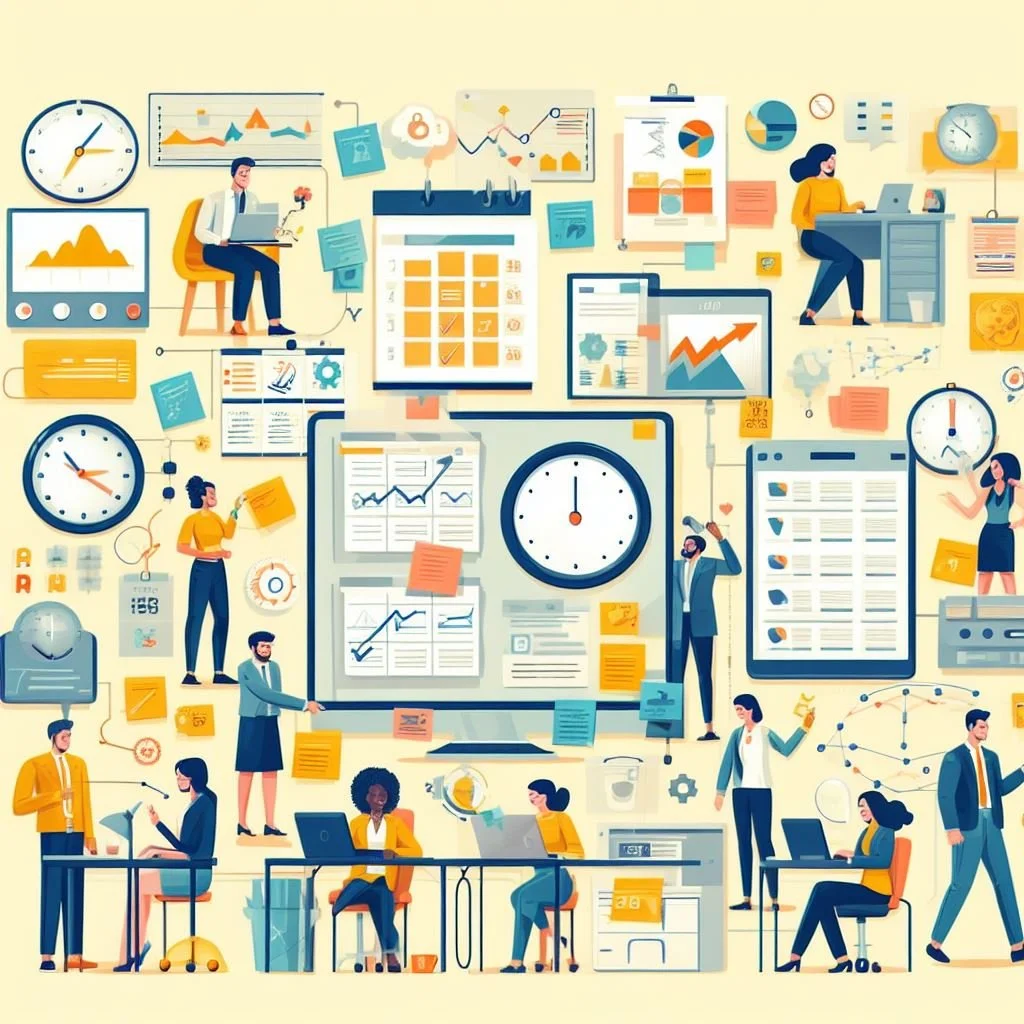Written by: Aaron Leong
Every Learning and Development (L&D) team’s dream is to have committed and competent employees, the vehicle that drives an organization’s growth and profit in an ever-growing business landscape. It falls to the L&D teams in organizations, small and large, to develop and retain talents with the appropriate skills and attitude, yet this challenge has only increased following the pandemic. With the changes in employee expectations, more so with Generation Z entering the workforce, it is far too easy for managers to take on a reactive mindset and prematurely conclude that employee attitude or work ethic has deteriorated.
As part of the L&D community, we are responsible for aligning employee career goals with company goals, so we must take a proactive mindset in understanding what underlies this phenomenon, and one such approach is through employee feedback.
Co-workers engaging in discussion
This article will first propose 4 ways an organisation’s L&D could benefit from listening to and acting on employee feedback. Next, we explain how employee feedback is inherently tied to the most essential elements of human motivation, which then predicts employee performance and retention.
WHAT ARE THE 4 WAYS?
Employee feedback gives you a clear picture of the skills or support that is currently missing in the team and, consequently, what type of support or training the team needs. With the increasing complexity of the technology and problems to solve, the plethora of platforms or business tools make it challenging for L&D to accurately identify the most relevant and appropriate for their company within budget and time constraints. Prior to adopting any new tool or introducing any new training programme, L&D needs to have a clear and accurate understanding of the challenges or roadblocks currently faced by employees. As such, employee feedback would highlight said issues, allowing the L&D team to accurately identify the relevant skills required by the employees. For example, employees could be stagnant in their careers and might benefit from a more structured way of brainstorming or strategic planning, but if you manage to identify that the employees already have excellent ideas, it is possible that their struggle lies with communicating their ideas in a clear and convincing manner. Since the L&D’s role is to ensure that employees are equipped to achieve the results that are expected of their position, employee feedback could shed light on the optimal way to use the company’s resources to grow the team.
1 to 1 feedback with your manager often helps
2. Furthermore, use employee feedback to ensure that the organizational and departmental policies remain effective and efficient in the current times. As organizations grow in reputation and teams grow in confidence and expertise, the tendency to become more homogeneous and rigid increases. This means that people are more susceptible to groupthink and struggle with divergent thinking, an important aspect of creative problem-solving and critical thinking. Moreover, sometimes our standard procedures or best practices might no longer be effective or efficient. Employee feedback would then be an important data-gathering process in obtaining diverse, and even dissenting, opinions. Clarity on what still works and what requires improvement shields the team from groupthink and prepares the company for future challenges before they occur.
3. Additionally, it will ensure that the policies and processes in the organization are employee-centric, that is, the company’s vision is aligned with employees’ day-to-day work. Employees are more engaged and productive when their work and how they are treated at work are consistent and aligned with the organization’s vision and mission. For example, it would be hard-pressed for employees to think innovate and problem-solve in a culture that rewards rigid adherence to potentially outdated best practices. Rules and systems were created by people with specific purposes. Employees, the very people whom the vision and mission are meant to guide, would give you the most accurate feedback on whether the systems in place are achieving the purpose they are supposed to.
4. A subtle, and less direct, effect of active listening and acting on employee feedback is forming a culture of learning. As L&D, we act as models and examples to employees in terms of how to behave and act at work. By demonstrating that we are open to upward feedback and constructive criticism, we establish a safe environment for sharing ideas and experiences, an environment that emphasizes self-improvement and encourages humility, creating a space to have difficult conversations. A learning culture encourages employees to be transparent about their mistakes or struggles, which are important predictors of eliminating mistakes in the future. A learning culture promotes collaboration and learning from one’s peers and mentors, resulting in growth in productivity and innovation. Conversely, a culture that prioritizes performance undermines psychological safety, encouraging employees to be guarded and always on the lookout for their own performance and career. In conclusion, a culture that practices upward feedback values improving ourselves instead of proving ourselves.
Human Motivation
The aforementioned advantages of feedback in L&D touch on three important elements of human motivation. Based on the Self-Determination Theory, humans are highly motivated and demonstrate quality performance in an environment that encourages autonomy, foster relatedness, and grows their competence. By providing the most relevant support and training, we increase employees’ competency, allowing them to excel in their work career development. By designing employee-centric policies, we encourage employees to practice their autonomy as their feedback and engagement with the L&D could improve their work conditions and have an impact on the organization. Employees would then feel that they are part of the company as opposed to feeling like a replaceable cog in a machine, encouraging them to take ownership of their careers and increase their commitment.
Example of Self Determination Theory
CONCLUSION
It is easy to forget that employees are one of the stakeholders in the organization. What is an organization without the people or the processes (created by said people) in it? As with any other stakeholders, you need to understand their needs and involve them in decision-making processes. As such, employee feedback is vital in developing the ideal team in any organization.
Let us know what are your thoughts on this in the comment below and if you enjoy reading our articles, do join our community to get latest insights on gamification and L&D.





















